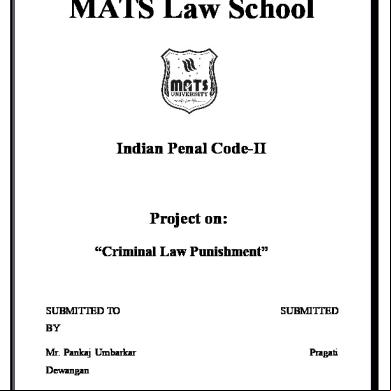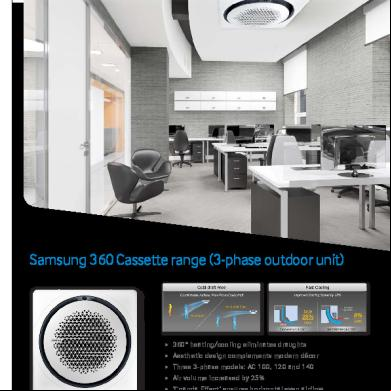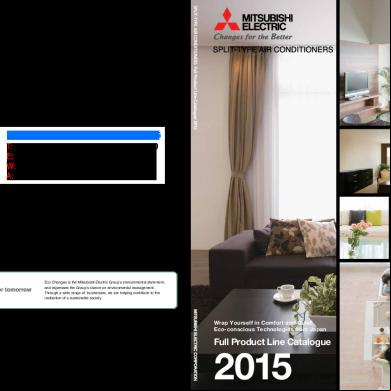Sopho Ipc 100 (slt Guide).pdf 1t135l
This document was ed by and they confirmed that they have the permission to share it. If you are author or own the copyright of this book, please report to us by using this report form. Report 3b7i
Overview 3e4r5l
& View Sopho Ipc 100 (slt Guide).pdf as PDF for free.
More details w3441
- Words: 1,450
- Pages: 9
The Advanced IP-PBX Communication Solution
Single Line Telephone Guide
Before using Your Telephone… Thank you for purchasing the SOPHO IPC 100 system. The telephone described in this manual should only be connected to a SOPHO IPC 100 system by means of the installation cables that come with the equipment. Due to the flexibility built into the system, your Dialling Codes and Feature Capacities may differ from those in this guide. Check with your Supplier / System and make a note of any differences.
Using Your Telephone Typical Single Line Telephone is displayed here. This Guide describes general analogue Single Line Telephone (SLT) procedures. Refer to the Guide included with to your specific SLT for details on additional key functions.
Dial Keys
Handset
Message Lamp
Ring Key Redial Key Recall Key Volume Control Keys
1
Placing Calls Placing an Outside Call Trunk Code
Telephone Number
?
9
?
?
?
Listen for Dial Tone before dialling the Telephone Number.
Placing an Intercom Call Extension Number
?
?
?
Your call will ring or voice-announce. If you hear ringing, wait for an answer. If you hear a beep, begin speaking. Dialling “1” changes voice/ring mode (where the destination is an IPC 100 Telephone).
Placing Calls Quickly Abbreviated Dialling
Common/Personal Abbv. Bin No.
Common/ Personal Abbv.
8
1
3
Group Abbv.
8
1
4
?
?
?
Group Abbv. Bin No.
?
?
?
Common/Personal Abbreviated Dialling Bins are numbered as follows (by default): 2-digit dialling: Common = 00-79, Personal = 80-99, or 3-digit dialling: Common = 000-899, Personal = 990-919. Single Line Telephones cannot store a number into an Abbreviated Dialling Bin. For this you must use an IPC 100 Display Telephone or PC Programming application. Ask your PBC Authorised Supplier for details. System programming is required to provide Group Abbreviated Dialling. Ask your PBC Authorised Supplier for details.
2
Placing Calls Quickly Last Number Redial
1
8
6
Intercom numbers can also be stored under Last Number Redial. (System programming is required. Ask your PBC Authorised Supplier for details.)
If your call doesn’t go through… Setting Camp On / Callback / Trunk Queuing 8 (Hear Busy Tone, No Answer, or Trunk Unavailable)
5
0
Wait without hanging up
Wait for the system to call you back
For Intercom Call, when you hear ringing, wait for the called party to answer. For Trunk Queuing, when you hear Dial Tone, begin dialling the telephone number.
For Intercom Call, when your phone starts the ringing, lift handset and wait for the called party to answer. For Trunk Queuing, when your phone starts the ringing, lift handset, hear Dial Tone and begin dialling the telephone number.
Cancelling Camp On / Callback / Trunk Queuing 8
7
(When Camp On set)
3
0
If your call doesn’t go through… Setting / Answering a Message Waiting Indication Set
8
4
1
8
4
1
(Hear Busy Tone or No Answer)
Answer
Your phone’s MW Indicator is flashing
When you set MW, the called party’s MW Indicator starts to flash. When you answer MW, the MW Indicator shall automatically go off when the called party answers.
Cancelling a Message Waiting Indication (at originating extension) Extension Number you want to cancel MW
8
7
1
?
?
?
Clearing All Message Waiting Indications (at any extension) 8
7
3
Clear all messages (you have left for other extensions and messages other extensions have left for you).
Answering Calls Answering an Outside / Intercom Call
(Ringing) Each type of incoming call can have its own distinctive ringing pattern. Ask you PBC Authorised Supplier for details.
4
Answering Calls Picking up another Extension’s Call In same Group
8
6
7
In other Groups
8
6
9
Pickup for Specified Extension
7
1
5
Extension Number
?
?
?
System programming is required to allow Group Call Pickup. Ask your PBC Authorised Supplier for details.
Hold / Transferring Calls Placing a Call on Hold / Retrieving a Held Call RECALL
Hold
(Talking)
Retrieve
RECALL
(Don’t hang up)
If you go on hook, the held call will ring back. This operation puts your call on Exclusive Hold. Other extension s can not take the call off Hold.
Retrieving a Held Outside Call Trunk No. you want to retrieve
7
7
2
?
?
Transferring a Call to another Extension RECALL
Extension Number
?
?
?
(Talking)
(Announce)
5
Forwarding Calls / Do Not Disturb Do Not Disturb (DND) 8
4
7
1
DND : Trunk Incoming Call
2
DND : Intercom Incoming Call
3
DND : Trunk & Intercom Incoming Call
4
DND : Transferred (CFW) Call
0
DND : Cancel
When you set DND, the Internal Dial Tone pattern changes.
Call Forwarding / Follow Me CFW Condition
8
8
8
Extension Number
?
?
?
CFW Type
?
?
2
Busy / No Answer
6
No Answer
2
FWD All Calls
3
Follow Me
7
Dual Ring
3
FWD Outside Calls only
4
Immediate
0
Cancel
4
FWD Intercom Calls only
When you set a Call Forward, the Internal Dial Tone pattern changes.
Call Forward Off-Premise Telephone Number
7
1
3
6
0
?
?
?
To Cancel When you set a Call Forward, the DND/CONF Key’s lamp flashes and the Internal Dial Tone pattern changes.
6
Conferencing Establishing a Conference Call Repeat for additional parties
Extension Number
RECALL
8 (Talking)
2
6
?
?
?
Trunk Code Telephone Number
0
?
(Talk)
?
RECALL You can repeat this operation to add additional parties. You may be able to have up to 8 parties in total (including your extension).
<press twice>
EU REGULATORY INFORMATION
CE Notice (European Union)
Hereby, “Philips Business Communications”, declares that this system terminal for the SOPHO IPC 100 is in compliance with the essential requirements and other relevant provisions of Directive 1999/5/EC. For a copy of the declaration of conformity please visit http://www.sopho.philips.com/doc or us at the address mentioned in this manual.
Nothing contained in this manual shall be deemed to be, and this manual does not constitute, a warranty of, or representation with respect to, any of the equipment covered. This manual is subject to change without notice and Philips Business Communications has no obligation to provide any updates or corrections to this manual. Further, Philips Business Communications also reserves the right, without prior notice, to make changes in equipment design or components as it deems appropriate. No representation is made that this manual is complete or accurate in all respects and Philips Business Communications shall not be liable for any errors or omissions. In no event shall Philips Business Communications be liable for any incidental or consequential damages in connection with the use of this manual. This document contains proprietary information that is protected by copyright. All rights are reserved. No part of this document may be photocopied or reproduced without prior written consent of Philips Business Communications.
Philips Business Communications P.O. Box 32 1200 JD Hilversum The Netherlands
Copyright © 2005 by Philips Business Communications All Rights Reserved.
Issue 1.0 June 2005
Product disposal information For countries in the European Union
The symbol depicted here has been affixed to your product in order to inform you that electrical and electronic products should never be disposed of as municipal waste. Electrical and electronic products including the cables, plugs and accessories should be disposed of separately in order to allow proper treatment, recovery and recycling. These products should be taken to a designated facility where the best available treatment, recovery and recycling techniques are available. Separate disposal has significant advantages: valuable materials can be re-used and it prevents the dispersion of unwanted substances into the municipal waste stream. This contributes to the protection of human health and the environment. Please be informed that a fine may be imposed for illegal disposal of electrical and electronic products via the general municipal waste stream.
In order to facilitate separate disposal and environmentally sound recycling, Philips Business Communications has made arrangements for local collection and recycling in all member states of the European Union. In case your electrical and electronic products need to be disposed of please refer to the contractual agreements that your company has made upon acquisition of these products. Should this information not be available, please the local Philips organization or us at www.sopho.philips.com.
For Countries outside the European UnionFor countries outside the European Union Disposal of electrical and electronic products in countries outside the European Union should be done in line with local regulations. If no arrangement has been made with Philips Business Communications or your supplier, please the local authorities for further information.
Single Line Telephone Guide
Before using Your Telephone… Thank you for purchasing the SOPHO IPC 100 system. The telephone described in this manual should only be connected to a SOPHO IPC 100 system by means of the installation cables that come with the equipment. Due to the flexibility built into the system, your Dialling Codes and Feature Capacities may differ from those in this guide. Check with your Supplier / System and make a note of any differences.
Using Your Telephone Typical Single Line Telephone is displayed here. This Guide describes general analogue Single Line Telephone (SLT) procedures. Refer to the Guide included with to your specific SLT for details on additional key functions.
Dial Keys
Handset
Message Lamp
Ring Key Redial Key Recall Key Volume Control Keys
1
Placing Calls Placing an Outside Call Trunk Code
Telephone Number
?
9
?
?
?
Listen for Dial Tone before dialling the Telephone Number.
Placing an Intercom Call Extension Number
?
?
?
Your call will ring or voice-announce. If you hear ringing, wait for an answer. If you hear a beep, begin speaking. Dialling “1” changes voice/ring mode (where the destination is an IPC 100 Telephone).
Placing Calls Quickly Abbreviated Dialling
Common/ Personal Abbv.
8
1
3
Group Abbv.
8
1
4
?
?
?
Group Abbv. Bin No.
?
?
?
Common/Personal Abbreviated Dialling Bins are numbered as follows (by default): 2-digit dialling: Common = 00-79, Personal = 80-99, or 3-digit dialling: Common = 000-899, Personal = 990-919. Single Line Telephones cannot store a number into an Abbreviated Dialling Bin. For this you must use an IPC 100 Display Telephone or PC Programming application. Ask your PBC Authorised Supplier for details. System programming is required to provide Group Abbreviated Dialling. Ask your PBC Authorised Supplier for details.
2
Placing Calls Quickly Last Number Redial
8
6
Intercom numbers can also be stored under Last Number Redial. (System programming is required. Ask your PBC Authorised Supplier for details.)
If your call doesn’t go through… Setting Camp On / Callback / Trunk Queuing 8 (Hear Busy Tone, No Answer, or Trunk Unavailable)
5
0
Wait without hanging up
Wait for the system to call you back
Cancelling Camp On / Callback / Trunk Queuing 8
7
(When Camp On set)
3
0
If your call doesn’t go through… Setting / Answering a Message Waiting Indication Set
8
4
1
8
4
1
(Hear Busy Tone or No Answer)
Answer
Your phone’s MW Indicator is flashing
When you set MW, the called party’s MW Indicator starts to flash. When you answer MW, the MW Indicator shall automatically go off when the called party answers.
Cancelling a Message Waiting Indication (at originating extension) Extension Number you want to cancel MW
8
7
1
?
?
?
Clearing All Message Waiting Indications (at any extension) 8
7
3
Clear all messages (you have left for other extensions and messages other extensions have left for you).
Answering Calls Answering an Outside / Intercom Call
(Ringing) Each type of incoming call can have its own distinctive ringing pattern. Ask you PBC Authorised Supplier for details.
4
Answering Calls Picking up another Extension’s Call In same Group
8
6
7
In other Groups
8
6
9
Pickup for Specified Extension
7
1
5
Extension Number
?
?
?
System programming is required to allow Group Call Pickup. Ask your PBC Authorised Supplier for details.
Hold / Transferring Calls Placing a Call on Hold / Retrieving a Held Call RECALL
Hold
(Talking)
Retrieve
RECALL
(Don’t hang up)
If you go on hook, the held call will ring back. This operation puts your call on Exclusive Hold. Other extension s can not take the call off Hold.
Retrieving a Held Outside Call Trunk No. you want to retrieve
7
7
2
?
?
Transferring a Call to another Extension RECALL
Extension Number
?
?
?
(Talking)
(Announce)
5
Forwarding Calls / Do Not Disturb Do Not Disturb (DND) 8
4
7
1
DND : Trunk Incoming Call
2
DND : Intercom Incoming Call
3
DND : Trunk & Intercom Incoming Call
4
DND : Transferred (CFW) Call
0
DND : Cancel
When you set DND, the Internal Dial Tone pattern changes.
Call Forwarding / Follow Me CFW Condition
8
8
8
Extension Number
?
?
?
CFW Type
?
?
2
Busy / No Answer
6
No Answer
2
FWD All Calls
3
Follow Me
7
Dual Ring
3
FWD Outside Calls only
4
Immediate
0
Cancel
4
FWD Intercom Calls only
When you set a Call Forward, the Internal Dial Tone pattern changes.
Call Forward Off-Premise Telephone Number
7
1
3
6
0
?
?
?
To Cancel When you set a Call Forward, the DND/CONF Key’s lamp flashes and the Internal Dial Tone pattern changes.
6
Conferencing Establishing a Conference Call Repeat for additional parties
Extension Number
RECALL
8 (Talking)
2
6
?
?
?
Trunk Code Telephone Number
0
?
(Talk)
?
RECALL You can repeat this operation to add additional parties. You may be able to have up to 8 parties in total (including your extension).
<press twice>
EU REGULATORY INFORMATION
CE Notice (European Union)
Hereby, “Philips Business Communications”, declares that this system terminal for the SOPHO IPC 100 is in compliance with the essential requirements and other relevant provisions of Directive 1999/5/EC. For a copy of the declaration of conformity please visit http://www.sopho.philips.com/doc or us at the address mentioned in this manual.
Nothing contained in this manual shall be deemed to be, and this manual does not constitute, a warranty of, or representation with respect to, any of the equipment covered. This manual is subject to change without notice and Philips Business Communications has no obligation to provide any updates or corrections to this manual. Further, Philips Business Communications also reserves the right, without prior notice, to make changes in equipment design or components as it deems appropriate. No representation is made that this manual is complete or accurate in all respects and Philips Business Communications shall not be liable for any errors or omissions. In no event shall Philips Business Communications be liable for any incidental or consequential damages in connection with the use of this manual. This document contains proprietary information that is protected by copyright. All rights are reserved. No part of this document may be photocopied or reproduced without prior written consent of Philips Business Communications.
Philips Business Communications P.O. Box 32 1200 JD Hilversum The Netherlands
Copyright © 2005 by Philips Business Communications All Rights Reserved.
Issue 1.0 June 2005
Product disposal information For countries in the European Union
The symbol depicted here has been affixed to your product in order to inform you that electrical and electronic products should never be disposed of as municipal waste. Electrical and electronic products including the cables, plugs and accessories should be disposed of separately in order to allow proper treatment, recovery and recycling. These products should be taken to a designated facility where the best available treatment, recovery and recycling techniques are available. Separate disposal has significant advantages: valuable materials can be re-used and it prevents the dispersion of unwanted substances into the municipal waste stream. This contributes to the protection of human health and the environment. Please be informed that a fine may be imposed for illegal disposal of electrical and electronic products via the general municipal waste stream.
In order to facilitate separate disposal and environmentally sound recycling, Philips Business Communications has made arrangements for local collection and recycling in all member states of the European Union. In case your electrical and electronic products need to be disposed of please refer to the contractual agreements that your company has made upon acquisition of these products. Should this information not be available, please the local Philips organization or us at www.sopho.philips.com.
For Countries outside the European UnionFor countries outside the European Union Disposal of electrical and electronic products in countries outside the European Union should be done in line with local regulations. If no arrangement has been made with Philips Business Communications or your supplier, please the local authorities for further information.










